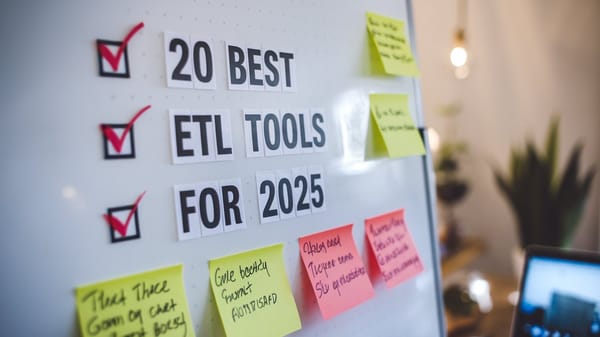When building a collaborative planning team: Strategies and Best Practices

In today's fast-paced and interconnected world, the ability to effectively collaborate within a team is more crucial than ever. Building a collaborative planning team involves more than just assembling a group of individuals; it requires a strategic approach to foster an environment where diverse ideas can flourish and collective goals can be achieved. This report delves into the essential strategies and best practices for creating a team that not only works together but thrives together.
The foundation of a successful collaborative planning team lies in its diversity. Diverse teams bring a variety of perspectives and skills, which can lead to more innovative solutions and improved problem-solving capabilities.
You can also visit Oncely.com to find more Top Trending AI Tools. Oncely partners with software developers and companies to present exclusive deals on their products. One unique aspect of Oncely is its “Lifetime Access” feature, where customers can purchase a product once and gain ongoing access to it without any recurring fees. Oncely also provides a 60-day money-back guarantee on most purchases, allowing customers to try out the products and services risk-free.
Oncely are hunting for the most fantastic AI & Software lifetime deals like the ones below or their alternatives:

Table of Contents
- Defining Roles and Responsibilities in Collaborative Planning Teams
- Importance of Clear Role Definitions
- Steps to Define Roles and Responsibilities
- Identify Project Needs
- Analyze Team Strengths
- Create Role Descriptions
- Use Frameworks for Role Definition
- Benefits of Defining Roles and Responsibilities
- Enhanced Productivity and Efficiency
- Increased Accountability and Motivation
- Improved Team Cohesion
- Implementing Role Definitions
- Communicate Clearly
- Use Templates and Tools
- Review and Adjust Regularly
- Challenges and Solutions
- Overlapping Responsibilities
- Adapting to Changing Needs
- Establishing Communication Channels in Collaborative Planning Teams
- Importance of Communication Channels
- Types of Communication Channels
- Synchronous Communication
- Asynchronous Communication
- Establishing a Communication Plan
- Components of a Communication Plan
- Enhancing Communication Skills
- Active Listening
- Conflict Resolution
- Leveraging Technology for Communication
- Video Conferencing
- Document Collaboration
- Monitoring and Evaluating Communication Effectiveness
- Feedback and Adjustments
- Measuring Success
- Setting Collaborative Goals in Collaborative Planning Teams
- Aligning Goals with Organizational Objectives
- Involving the Team in Goal-Setting
- Utilizing the SMART Framework
- Monitoring Progress and Adjusting Goals
- Celebrating Milestones and Successes
- Overcoming Common Challenges
- Leveraging Technology for Goal Achievement
Defining Roles and Responsibilities in Collaborative Planning Teams
Importance of Clear Role Definitions
Defining roles and responsibilities is a critical component in building a collaborative planning team. Clear role definitions help prevent confusion, reduce overlap in duties, and enhance accountability, ultimately leading to improved team efficiency and morale. When team members understand their individual responsibilities, it reduces potential conflicts and fosters a more cohesive work environment (Creately). This clarity ensures that each task is appropriately assigned to the right individual, maximizing their strengths and expertise.
Steps to Define Roles and Responsibilities
Identify Project Needs
The first step in defining roles and responsibilities is to understand the scope of the project or task at hand. This involves determining what roles are essential to accomplish the project goals. By identifying the specific needs of the project, teams can ensure that all necessary roles are covered and that there is no duplication of effort (Creately).
Analyze Team Strengths
Assessing the strengths and skills of team members is crucial in assigning roles that align with their expertise and interests. This not only enhances individual performance but also contributes to the overall success of the team. By leveraging team strengths, managers can set realistic expectations and effectively delegate responsibilities (Fellow).
Create Role Descriptions
Writing detailed descriptions for each role is essential. These descriptions should include specific duties, expectations, and necessary resources for each position. Clear role descriptions promote transparency and collaboration among team members, ensuring everyone understands their roles and the roles of others (Creately).
Use Frameworks for Role Definition
Frameworks such as the RACI (Responsible, Accountable, Consulted, Informed) and DACI (Driver, Approver, Contributor, Informed) matrices can be effective tools for defining roles and responsibilities. These frameworks help map out different tasks and assign them to specific roles, ensuring accountability while providing flexibility to adapt to changing project needs (Mural).
Benefits of Defining Roles and Responsibilities
Enhanced Productivity and Efficiency
Clearly defined roles and responsibilities lead to enhanced productivity and efficiency within the team. When team members know exactly what is expected of them, they can focus on their tasks without unnecessary distractions or confusion. This clarity allows for more effective and productive work towards organizational goals and objectives (Fellow).
Increased Accountability and Motivation
When responsibilities are clearly outlined, team members are more likely to take ownership of their work, leading to increased accountability and motivation. This sense of ownership encourages individuals to perform at their best and contribute positively to the team's success (Creately).
Improved Team Cohesion
Defining roles and responsibilities helps improve team cohesion by reducing potential conflicts and misunderstandings. When everyone is aware of their roles and the roles of others, it fosters a sense of unity and collaboration within the team. This cohesion is essential for achieving successful project outcomes (Persona Talent).
Implementing Role Definitions
Communicate Clearly
Effective communication is key to implementing role definitions successfully. Ensure that all team members understand their roles and the roles of others. This can be achieved through regular team meetings, open channels for feedback, and the use of collaboration tools like Slack or Microsoft Teams to keep discussions flowing (Persona Talent).
Use Templates and Tools
Utilizing tools such as a Roles and Responsibilities Template can streamline and document the process of defining roles. Project management tools like Asana or Trello can also be used to track progress and assign tasks, ensuring that everyone is aligned and working towards the same goals (Persona Talent).
Review and Adjust Regularly
Roles and responsibilities should be reviewed and adjusted regularly as projects progress or team dynamics change. Continuous evaluation helps keep the collaboration strategy effective and ensures that roles remain relevant to the team's needs (Creately).
Challenges and Solutions
Overlapping Responsibilities
One common challenge in defining roles and responsibilities is the potential for overlapping duties, which can lead to confusion and inefficiency. To address this, it is important to clearly differentiate individual and collective responsibilities. Outlining these distinct responsibilities in job descriptions can set clear boundaries for what team members should take individual ownership of versus what they need to collaborate on (Mekari).
Adapting to Changing Needs
The evolving nature of many projects can create confusion about who should do what. To solve this, teams should agree on a framework for defining roles and responsibilities that allows for flexibility and adaptation to changing needs (Mural).
By following these strategies and addressing potential challenges, teams can effectively define roles and responsibilities, leading to a more collaborative and successful planning process.
Establishing Communication Channels in Collaborative Planning Teams
Importance of Communication Channels
Effective communication channels are crucial for the success of collaborative planning teams. They ensure that information flows seamlessly among team members, facilitating coordination and decision-making. According to a report by Asana, clear communication can significantly impact project success, as it helps team members understand their roles, responsibilities, and the project's progress. Without well-defined communication channels, teams may face confusion, miscommunication, and inefficiencies, which can hinder project outcomes.
Types of Communication Channels
Synchronous Communication
Synchronous communication involves real-time interactions, which are essential for immediate feedback and dynamic discussions. Tools such as video conferencing platforms (e.g., Zoom, Google Meet) and instant messaging applications (e.g., Slack) are commonly used for synchronous communication. These tools allow team members to engage in live discussions, brainstorm ideas, and resolve issues promptly. As highlighted by Forbes, choosing the right channel for synchronous communication depends on the purpose of the interaction and the audience involved.
Asynchronous Communication
Asynchronous communication allows team members to communicate without the need for immediate responses. This type of communication is beneficial for teams working across different time zones or with flexible schedules. Email, project management tools like Asana, and document collaboration platforms (e.g., Google Docs) are typical asynchronous communication channels. These tools enable team members to share updates, provide feedback, and collaborate on documents at their convenience, ensuring that work progresses smoothly even when team members are not available simultaneously.
Establishing a Communication Plan
A well-structured communication plan is essential for defining how and when different communication channels should be used. According to Asana, a communication plan should outline the specific tools for various types of communication, such as using Slack for quick updates and Asana for project-related discussions. This plan helps prevent confusion and ensures that team members know where to find information and whom to contact for specific queries.
Components of a Communication Plan
-
Communication Methods: Define the tools and platforms for different communication needs. For instance, use email for external communications and Slack for internal team updates.
-
Frequency and Timing: Specify how often and when communication should occur. This includes scheduling regular team meetings and setting deadlines for asynchronous updates.
-
Roles and Responsibilities: Assign communication roles to team members, such as a project manager responsible for disseminating information and a team member tasked with updating project status.
-
Feedback Mechanisms: Establish channels for team members to provide feedback on communication effectiveness and suggest improvements.
-
Crisis Communication: Outline procedures for urgent communications, ensuring that critical information is relayed promptly to all relevant stakeholders.
Enhancing Communication Skills
Building effective communication skills within the team is vital for maximizing the potential of established communication channels. As noted by BetterUp, professional development opportunities can help team members improve their communication capabilities. Training sessions on active listening, conflict resolution, and effective use of communication tools can empower team members to engage more effectively with one another.
Active Listening
Active listening is a fundamental communication skill that involves fully concentrating, understanding, and responding to what is being said. It fosters a healthy work environment by showing that team members are engaged and value each other's input. According to Asana, active listening is crucial for effective communication, as it helps prevent misunderstandings and builds trust among team members.
Conflict Resolution
Conflict resolution skills are essential for addressing disagreements and maintaining a collaborative atmosphere. Training team members in conflict resolution techniques can help them navigate challenging situations and find mutually beneficial solutions. As highlighted by BetterUp, creating a culture of open communication and transparency can prevent conflicts from escalating and ensure that team members feel comfortable expressing their concerns.
Leveraging Technology for Communication
The use of technology is integral to establishing effective communication channels in collaborative planning teams. Project management tools like Asana offer features such as task management, goal setting, and file sharing, which enhance team communication and collaboration. These tools provide a centralized platform for storing and accessing project-related information, reducing the time spent searching for documents and updates.
Video Conferencing
Video conferencing tools enable face-to-face interactions, which are crucial for building rapport and understanding non-verbal cues. As noted by Asana, video conferencing is particularly beneficial for remote teams, as it allows team members to connect and collaborate effectively despite geographical distances.
Document Collaboration
Online document collaboration platforms, such as Google Docs, facilitate real-time editing and sharing of documents. These tools ensure that team members can work together on documents, track changes, and provide feedback, enhancing the overall efficiency of the collaborative process.
Monitoring and Evaluating Communication Effectiveness
Regularly monitoring and evaluating the effectiveness of communication channels is essential for continuous improvement. Project managers should assess whether the established communication plan meets the team's needs and make adjustments as necessary. According to The Intelligent Project Manager, setting specific goals and benchmarks for communication can help evaluate its impact on project success.
Feedback and Adjustments
Encouraging team members to provide feedback on communication processes can identify areas for improvement. Regularly reviewing and updating the communication plan ensures that it remains relevant and effective in meeting the team's evolving needs.
Measuring Success
Metrics such as response times, the frequency of updates, and team satisfaction surveys can provide insights into the effectiveness of communication channels. These metrics help identify strengths and weaknesses in the communication process, guiding future improvements.
In summary, establishing effective communication channels is a critical component of building a successful collaborative planning team. By defining clear communication methods, enhancing team communication skills, leveraging technology, and continuously monitoring effectiveness, teams can ensure that information flows smoothly, enabling them to achieve their project goals efficiently.
Setting Collaborative Goals in Collaborative Planning Teams
Aligning Goals with Organizational Objectives
Setting collaborative goals begins with aligning them with the broader objectives of the organization. This alignment ensures that the team's efforts contribute to the company's overall success. According to ThriveSparrow, understanding organizational objectives is crucial for setting relevant and impactful goals. This alignment not only provides direction but also ensures that the team’s work is meaningful and contributes to larger business outcomes.
In practice, this involves a thorough understanding of both near-term and long-term business objectives. For instance, if a company aims to enhance customer satisfaction, a collaborative planning team might set goals to improve service delivery processes. This alignment helps in creating a cohesive strategy that supports the organization's mission and vision (Mural).
Involving the Team in Goal-Setting
Involving team members in the goal-setting process is essential for fostering a sense of ownership and commitment. When team members participate in setting goals, they are more likely to be motivated and engaged in achieving them. This participatory approach ensures that the goals are realistic and achievable, as team members can provide insights into what is feasible based on their expertise and experience (ThriveSparrow).
Moreover, involving the team in this process can enhance collaboration and communication, as it encourages open dialogue about expectations and responsibilities. This collaborative approach can lead to more innovative solutions and a stronger commitment to achieving the set goals.
Utilizing the SMART Framework
The SMART framework is a widely recognized tool for setting effective goals. It stands for Specific, Measurable, Achievable, Relevant, and Time-bound. By applying this framework, teams can create clear and actionable goals that provide a roadmap for success (Mural).
- Specific: Goals should be clear and specific to avoid ambiguity. For example, instead of setting a goal to "improve team performance," a more specific goal would be "increase project completion rate by 20% within the next quarter."
- Measurable: Goals should have criteria for measuring progress. This could involve setting key performance indicators (KPIs) or milestones to track achievements.
- Achievable: Goals should be realistic and attainable, considering the team's resources and constraints.
- Relevant: Goals should align with broader organizational objectives and be relevant to the team's purpose.
- Time-bound: Goals should have a clear timeline to ensure timely completion and accountability.
Monitoring Progress and Adjusting Goals
Regularly monitoring progress is vital to ensure that the team stays on track toward achieving its goals. This involves setting up regular check-ins or progress reviews to assess how well the team is doing and to identify any obstacles that may arise. According to ThriveSparrow, this process allows teams to make necessary adjustments to their goals or action plans, ensuring continued alignment with organizational objectives.
Adjustments might include reallocating resources, modifying timelines, or even redefining goals if they are no longer relevant or achievable. This flexibility is crucial in a dynamic business environment where priorities can shift rapidly.
Celebrating Milestones and Successes
Celebrating milestones and successes is an important aspect of maintaining team motivation and morale. Recognizing achievements not only boosts team spirit but also reinforces the importance of the goals set. Celebrating small wins along the way can keep the team motivated and focused on the ultimate objective (ThriveSparrow).
This practice can involve formal recognition programs, informal team celebrations, or even individual acknowledgments. By appreciating the team's efforts, leaders can foster a positive and supportive team culture that encourages continued collaboration and success.
Overcoming Common Challenges
Setting collaborative goals is not without its challenges. Common obstacles include misalignment with company goals, lack of clarity, and insufficient resources. To overcome these challenges, teams can employ several strategies:
- Ensure Alignment: Regularly revisit and communicate organizational objectives to ensure that team goals remain aligned.
- Clarify Goals: Use the SMART framework to ensure goals are clear and well-defined.
- Resource Allocation: Ensure that the team has the necessary resources and support to achieve its goals. This might involve securing additional funding, personnel, or technology.
- Continuous Feedback: Establish a feedback loop to gather input from team members and stakeholders, allowing for ongoing improvements and adjustments (Edstellar).
By addressing these challenges proactively, teams can enhance their ability to set and achieve collaborative goals effectively.
Leveraging Technology for Goal Achievement
In today's digital-first world, leveraging technology is essential for facilitating collaboration and achieving team goals. Tools such as Slack and Asana can streamline communication and project management, making it easier for teams to connect and work efficiently (Edstellar).
These tools can help teams track progress, share updates, and collaborate in real-time, ensuring that everyone is aligned and informed. By integrating technology into the goal-setting and achievement process, teams can enhance their efficiency and effectiveness, ultimately driving better outcomes.
In summary, setting collaborative goals in a planning team involves aligning with organizational objectives, involving team members, utilizing the SMART framework, monitoring progress, celebrating successes, overcoming challenges, and leveraging technology. These strategies collectively contribute to a more cohesive, motivated, and successful team.





